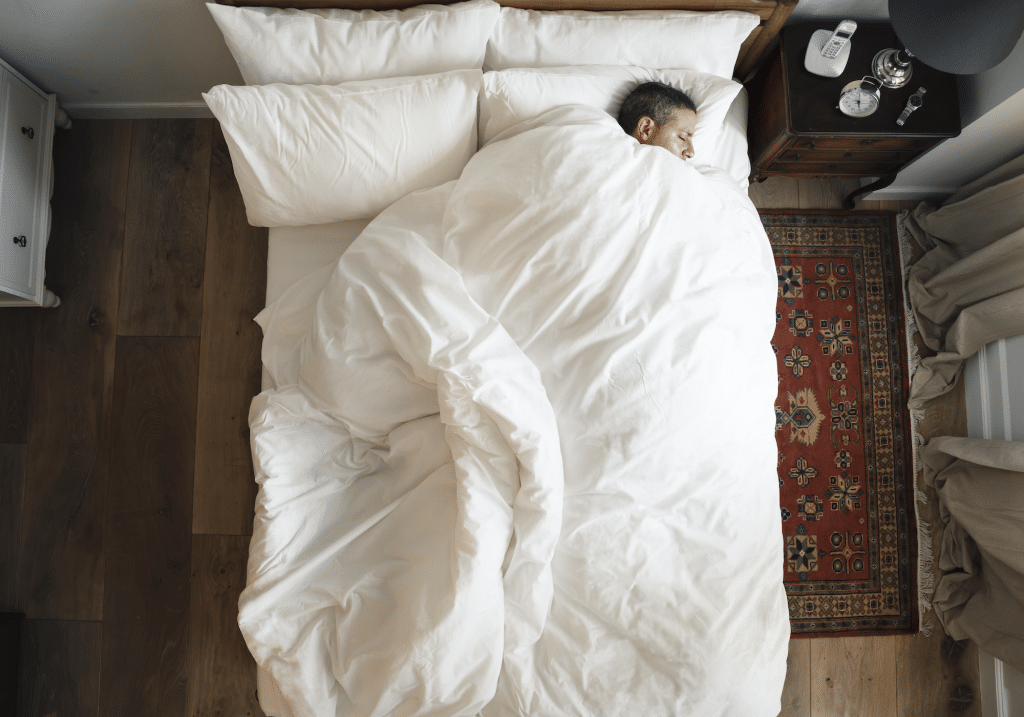
Snoring and Sleep Apnoea are considered to be Sleep Disordered Breathing conditions, with Snoring on the less serious end and Obstructive Sleep Apnoea at the other end of the spectrum.
Snoring is the sound made by turbulent air flowing through the upper airway. Large gusts of air cause a vibrating of tissue in and around the throat, including the uvula, base of the tongue, epiglottis, and tonsils. Snoring affects young and old, although as muscle tissue becomes floppier as we age, snoring is more common in those over 40.
Snoring is by its nature, over-breathing. Over-breathing is in the wheelhouse of the Buteyko Breathing Technique (BBT). The purpose of BBT is to retrain dysfunctional breathing which includes over-breathing.
Most snoring can be stopped by simply taping the mouth closed at night. And many people do just this. However, the over-breathing that caused the snoring has not changed, the symptom of over-breathing, ie snoring, has merely been suppressed.
If someone regularly snores at night, it is very likely their daytime breathing is dysfunctional. Signs of dysfunctional breathing can include mouth breathing, chest breathing, frequent yawning or sighing, and breathlessness. Retraining dysfunctional breathing with the BBT will help reduce snoring AND a whole host of other conditions, including obstructive sleep apnoea.
Obstructive Sleep Apnoea (OSA) is a more severe form of sleep-disordered breathing than snoring. It is characterized by repetitive pauses (apnoeas) in breathing during sleep due to partial or complete obstruction of the upper airway. These pauses in breathing can last for several seconds to minutes and occur multiple times throughout the night. OSA often leads to decreased blood oxygen levels and disrupted sleep patterns.
OSA is diagnosed via a sleep study which can be undertaken in a clinic, and also at home. The sleep study is the gold standard in diagnosis, although this simple questionnaire may predict if you are likely to have OSA.
Studies from Europe and the US suggest that between 9-38% of the adult population suffers from OSA. Australian statistics are probably similar. OSA is a serious condition with significant health consequences if left untreated. It has been linked to an increased risk of high blood pressure, heart disease, stroke, diabetes, depression, anxiety, and obesity. OSA affects daytime functioning, and it has been estimated that people with untreated OSA have up to 7 times more likely to have a motor vehicle accident.
Treatments offered for OSA include CPAP (continuous Positive airway pressure) machine, dental splint or surgery. If you have OSA, it is important that it is treated. OSA is a serious sleep-disordered breathing condition; whatever treatment you decide on, breathing retraining will only improve your situation.
While not everyone who snores has Obstructive Sleep Apnoea (OSA), nearly everyone with OSA snores. OSA has been around for a long time, it was once referred to as Pickwickian syndrome, in reference to a corpulent Dickensian character. However, in the last few decades, with more research, it is evident that there are several different phenotypes or varieties of Obstructive Sleep Apnoea (OSA), and indeed, you don’t need to be overweight to suffer from the condition. In most phenotypes, dysfunctional breathing contributes to the cause, explaining why Buteyko Breathing Technique (BBT) breathing retraining can be helpful in the adjunctive treatment of Obstructive Sleep Apnoea (OSA).
Pcrit refers to the collapsibility of the upper airway during sleep. A high Pcrit indicates that the airway is more likely to collapse easily, leading to hypopneas (reduced airflow) or apneas (pauses in breathing). Factors such as narrowing of the upper airway due to fat accumulation, anatomical variations, and increased airflow can contribute to a higher Pcrit. The Buteyko Breathing Technique (BBT) focuses on retraining breathing to be quieter and slower, which helps reduce Pcrit and stabilize the airway.
Loop gain refers to the sensitivity of the respiratory control system to changes in carbon dioxide (CO2) levels. People with high loop gain have an exaggerated response to small increases in CO2 during sleep. This can lead to frequent awakenings and disrupted sleep. Additionally, after an apnea episode, individuals with high loop gain may snore excessively, reducing CO2 levels and inhibiting breathing signals, potentially causing central sleep apnea. The BBT can improve CO2 tolerance, which may be beneficial for individuals with high loop gain phenotype.
The upper airway is supported by more than 20 muscles involved in breathing, chewing, speech, and swallowing. When these muscles become less active during sleep, the risk of airway closure increases. Practices such as nasal breathing, diaphragmatic breathing, and proper tongue placement (resting on the roof of the mouth) can help recruit and activate these upper airway muscles. Nasal breathing also facilitates the release of nitric oxide, which aids in muscle recruitment. The Buteyko Breathing Technique (BBT) incorporates these techniques to improve upper airway recruitment.
By addressing these factors through breathing retraining techniques like the Buteyko Breathing Technique, individuals with OSA may experience improvements in their breathing patterns, a reduction in symptoms,(snoring and sleep apnoea), and better sleep quality.